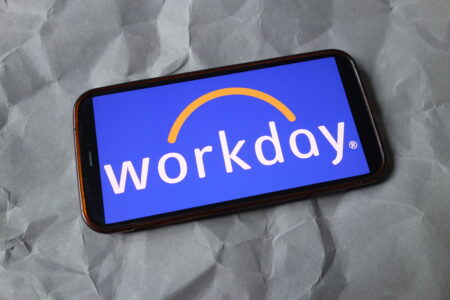
In this executive interview, filmed on location at Oracle CloudWorld 2023, I’m joined by Greg Pavlik senior vice president, Oracle Cloud Infrastructure. We discuss the transformative potential of generative artificial intelligence (GenAI) models in industries like healthcare and public safety.
Highlights
00:51 — Everybody’s talking about GenAI. Models can make predictions about complex relationships that make sense to the human mind; the hardware has changed. GenAI models can generalize; they’re not just repeating what they’ve seen. They’re able to extrapolate better.
03:47 — Public safety officers have interactions with citizens that will be recorded on a body cam. Ultimately, that all needs to be transcribed and put into required legal formats. Oracle was able to take the models, use those representative examples with its software, and then autogenerate the police reports from police summaries, etc.
04:34 —Upon hearing this use case, an aha moment went off. That’s when people start thinking, “Okay, we need to do that number one. Now, what else can they do?” So, find the hardest use case and tackle that. The odds are that the model gets to be successful in that context. Once you’ve solved for that, it all rolls from there.
06:02 — While Greg had a medical procedure a few years ago, he was in a hospital bed for six hours, and every time he looked up, someone was typing at a computer. Eventually, he realized they were doing summarization: referral letters, insurance, and company updates. Bringing this four to five hours a day down to 20 minutes would lead to massive productivity gains and better healthcare.
08:07— Imagine you have a microphone and are capturing everything and that AI is able to diarize it, it’s able to make corrections, to make sure there’s a transcript. Then you can turn that into all these different summary documents on the backend. Think of it like AI on the front end, optimizing the interaction space, and then AI on the back end, optimizing the downstream workflow.
08:56— Oracle is uniquely capable and ambitious in saying it wants to take care of the end-to-end enterprise AI. It has the cloud business, the database business, and the applications business. It’s a combination of all three that creates this hyper-optimized environment for doing AI that actually works and works well for businesses.
10:13 — I mention that I’ve never seen more interaction or engagement between the various product lines than at this year’s CloudWorld. Greg agrees and says they have a good leadership team that works quite well across product areas. He gives credit to Larry Ellison and also thinks there’s a basic economic reason to operate like this as well.
11:37 — Fine-tuning models requires an investment of maybe days or weeks, and the result is a model more adapted to your business teams and more aware of the vocabulary and the nature of the way your business uses language. One of OCI’s generative AI service’s main functional points is its API-driven ability to finetune the model.
12:24 —A technique called retrieval augmented generation (RAG) has come up a lot at the conference. These models can take a query out to search and, once they have a good query to databases, bring that result back into the generative context of the model in action and give you an answer that reflects the real-time aspects of your data.
13:21 — It’s a dynamic way to incorporate the data of an organization without having to rebuild the models. That’s going to be key for probably the majority of the near-term business use cases that people are going to try to operationalize.
14:06 — Generative AI is an embryonic technology that will continue to get better and more powerful. Greg anticipates the next major wave of adoption will involve some of these augmentation techniques. After that, he thinks models will start to do more ambitious actions, start to interact with APIs and do actions on behalf of users.







